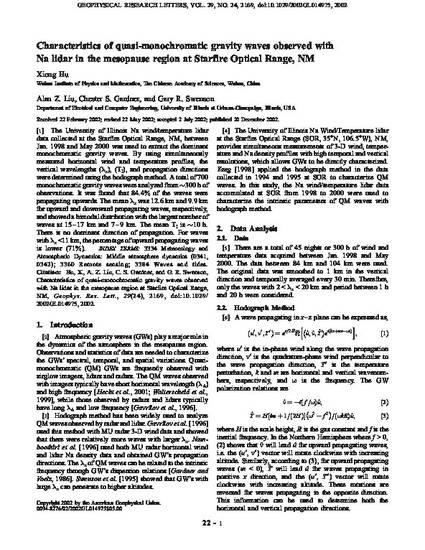
The University of Illinois Na wind/temperature lidar data collected at the Starfire Optical Range, NM, between Jan. 1998 and May 2000 was used to extract the dominant monochromatic gravity waves. By using simultaneously measured horizontal wind and temperature profiles, the vertical wavelengths (λz), (TI), and propagation directions were determined using the hodograph method. A total of 700 monochromatic gravity waves were analyzed from ~300 h of observations. It was found that 84.4% of the waves were propagating upwards. The mean λz was 12.6 km and 9.9 km for upward and downward propagating waves, respectively, and showed a bimodal distribution with the largest number of waves at 15–17 km and 7–9 km. The mean TI is ~10 h. There is no dominant direction of propagation. For waves with λz <11 km, the percentage of upward propagating waves is lower (71%).
Available at: http://works.bepress.com/alanliu/40/
